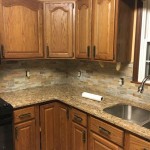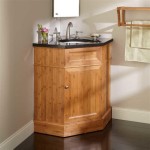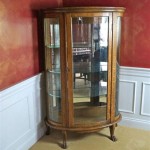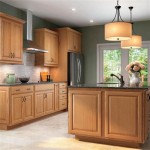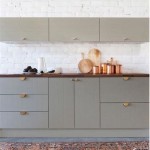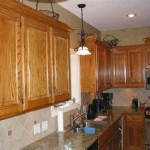Cabinet Materials: What You Need to Know
Selecting the appropriate materials for cabinets is a pivotal decision in any kitchen or bathroom renovation project. Cabinets are not merely storage solutions; they contribute significantly to the overall aesthetic, functionality, and longevity of a space. The choice of materials impacts durability, resistance to moisture, style, and budget. Understanding the diverse range of cabinet materials available is crucial for making an informed decision that aligns with specific needs and preferences.
This article aims to provide a comprehensive overview of common cabinet materials, outlining their properties, advantages, disadvantages, and typical applications. By exploring these options, homeowners and designers can navigate the complexities of cabinet material selection and create spaces that are both beautiful and functional.
Solid Wood Cabinets: Character and Durability
Solid wood remains a highly sought-after material for cabinet construction, prized for its natural beauty, strength, and timeless appeal. The term "solid wood" generally refers to cabinets made with solid wood components for the doors, drawer fronts, and face frames. The cabinet boxes themselves may be constructed from plywood or particleboard, often with a wood veneer to match the face frame. This combination offers a balance of aesthetics and cost-effectiveness.
Different wood species offer varying characteristics in terms of grain pattern, color, hardness, and cost. Some of the most popular solid wood options include:
- Maple: A hard, durable wood with a tight grain pattern making it ideal for painting or staining. Maple offers a smooth, consistent surface and a neutral tone that complements a wide range of design styles.
- Oak: Known for its prominent grain pattern and durability, oak is a classic choice for cabinets. It is available in red oak and white oak varieties, each possessing distinct characteristics. Red oak features a reddish hue and a more open grain, while white oak is slightly denser and more water-resistant.
- Cherry: A rich, reddish-brown wood that develops a deeper patina over time. Cherry is prized for its elegant appearance and is often used in more formal settings. It is relatively soft compared to maple and oak, requiring careful handling during construction.
- Hickory: A strong and durable wood with a pronounced grain pattern and a range of colors from light to dark brown. Hickory offers a rustic and character-rich aesthetic, often used in country or farmhouse-style kitchens.
- Pine: A softwood that is more affordable than hardwoods like maple, oak, or cherry. Pine features a knotty grain pattern and a light color that readily accepts paint or stain. It is less durable than hardwoods and more susceptible to dents and scratches.
Advantages of Solid Wood Cabinets:
- Aesthetics: Solid wood offers unparalleled natural beauty and warmth. The unique grain patterns and colors of different wood species add character to any space.
- Durability: Solid wood, especially hardwoods, is strong and durable, capable of withstanding everyday wear and tear.
- Repairability: Scratches and dents in solid wood cabinets can often be repaired, extending their lifespan.
- Refinishing: Solid wood cabinets can be refinished multiple times, allowing for a change in color or style over time.
- Value: Solid wood cabinets are generally considered a high-end option, adding value to a home.
Disadvantages of Solid Wood Cabinets:
- Cost: Solid wood cabinets are typically more expensive than cabinets made from other materials.
- Moisture Sensitivity: Solid wood can expand and contract with changes in humidity, potentially leading to warping or cracking.
- Maintenance: Solid wood cabinets require regular cleaning and maintenance to prevent damage and maintain their appearance.
- Sustainability Concerns: Depending on the source, solid wood harvesting can have environmental impacts. Sourcing wood from sustainably managed forests is crucial.
Plywood Cabinets: Stability and Versatility
Plywood is an engineered wood product composed of multiple layers of thin wood veneers glued together with the grain of each layer running perpendicular to the next. This cross-grain construction provides exceptional strength and stability, making plywood a popular choice for cabinet boxes, shelves, and drawer bottoms.
Plywood is available in various grades, thicknesses, and veneer options. Higher grades of plywood feature smoother surfaces and fewer voids, making them more suitable for staining or painting. Lower grades may have imperfections and are typically used for concealed areas.
Common types of plywood used in cabinet construction include:
- Hardwood Plywood: Made with hardwood veneers, such as birch, maple, or oak. Hardwood plywood offers a durable and aesthetically pleasing surface for staining or painting.
- Softwood Plywood: Made with softwood veneers, such as pine or fir. Softwood plywood is typically less expensive than hardwood plywood and is often used for cabinet interiors or areas where appearance is less critical.
- Marine-Grade Plywood: Specifically designed for use in marine environments, marine-grade plywood is highly resistant to moisture and rot. It is typically used for cabinets in bathrooms or kitchens where humidity levels are high.
Advantages of Plywood Cabinets:
- Strength and Stability: Plywood is stronger and more stable than solid wood, resisting warping and cracking.
- Moisture Resistance: Plywood is less susceptible to moisture damage than solid wood, making it a good choice for kitchens and bathrooms. Marine-grade plywood offers superior moisture resistance.
- Cost-Effective: Plywood is generally less expensive than solid wood, making it a more budget-friendly option.
- Versatility: Plywood can be easily cut, shaped, and finished to create a variety of cabinet styles.
- Screw Holding Ability: Plywood holds screws well compared to particleboard, crucial for long-term cabinet integrity.
Disadvantages of Plywood Cabinets:
- Appearance: Plywood edges can be unattractive and require edge banding or other finishing techniques.
- Potential for Delamination: If exposed to excessive moisture or improperly manufactured, the layers of plywood can delaminate.
- Formaldehyde Emissions: Some plywood products contain formaldehyde, a known carcinogen. Look for plywood that is CARB (California Air Resources Board) compliant and certified as low-emitting.
Particleboard Cabinets: Affordability and Availability
Particleboard, also known as low-density fiberboard (LDF), is an engineered wood product made from wood chips, sawdust, and resin that are pressed together under high pressure and heat. Particleboard is a cost-effective alternative to solid wood and plywood, widely used for cabinet boxes, shelving, and other components.
Particleboard is typically covered with a laminate or veneer to provide a finished surface. Laminates are available in a wide range of colors, patterns, and textures, offering versatility in design. Veneers provide the look of real wood at a lower cost. Melamine is a common laminate applied to particleboard, offering a durable and easy-to-clean surface.
Advantages of Particleboard Cabinets:
- Affordability: Particleboard is the least expensive material option for cabinet construction.
- Availability: Particleboard is readily available in a variety of sizes and thicknesses.
- Smooth Surface: Particleboard has a smooth, flat surface that is ideal for laminating or veneering.
- Consistency: Particleboard offers a consistent density and surface texture, making it easy to work with.
Disadvantages of Particleboard Cabinets:
- Low Strength: Particleboard is less strong and durable than solid wood or plywood.
- Moisture Sensitivity: Particleboard is highly susceptible to moisture damage, causing it to swell and crumble.
- Poor Screw Holding: Particleboard does not hold screws well, making it difficult to assemble and repair cabinets.
- Weight: Particleboard is heavier than plywood for the same thickness.
- Formaldehyde Emissions: Similar to some plywood products, particleboard can contain formaldehyde. Look for CARB-compliant and low-emitting options.
- Difficult to Repair: Damage to particleboard cabinets is often difficult or impossible to repair.
Other Cabinet Materials
While solid wood, plywood, and particleboard are the most prevalent materials used for cabinet construction, other options are available, each offering unique characteristics:
- Medium-Density Fiberboard (MDF): MDF is an engineered wood product similar to particleboard but made with finer wood fibers. MDF is denser and more stable than particleboard, offering a smoother surface for painting or laminating. MDF is often used for cabinet doors and drawer fronts due to its ability to be easily shaped and molded. However, like particleboard, it is susceptible to moisture damage.
- Stainless Steel: Stainless steel cabinets are durable, hygienic, and resistant to corrosion, making them ideal for commercial kitchens, garages, and outdoor applications. Stainless steel cabinets are typically more expensive than wood cabinets and offer a modern, industrial aesthetic.
- Metal (Other): Beyond stainless steel, other metals like aluminum can be used, often powder-coated for color and durability. These offer lightweight strength and are resistant to rust, often seen in outdoor cabinets.
- Glass: Glass is commonly used for cabinet doors, providing a display area for showcasing items. Glass doors can be clear, frosted, or textured to create different effects. Glass is fragile and requires careful handling.
- Laminate: As mentioned earlier, laminate is a surface covering applied to particleboard or MDF. High-pressure laminate (HPL) is more durable than low-pressure laminate (LPL) and is often used for countertops and cabinet surfaces that are subject to heavy use.
- Acrylic: Acrylic is a durable and glossy material often used for cabinet doors and drawer fronts. Acrylic offers a modern, high-end look and is available in a variety of colors. It is scratch-resistant but can be more expensive than laminate.
- Thermofoil: Thermofoil is a vinyl material that is heat-sealed to MDF or particleboard. Thermofoil cabinets are seamless and easy to clean, but they are not as heat-resistant as other materials and can peel over time.
The best cabinet material depends on individual needs, budget, and aesthetic preferences. Careful consideration of the properties, advantages, and disadvantages of each material is essential for making an informed decision.

5 Common Kitchen Cabinet Door Materials You Must Know The Maker
:max_bytes(150000):strip_icc()/CabinetsDwg2-1319246ccb9344b2ba1b390ebfc7c7aa.png?strip=all)
Make Cabinets The Easy Way

Kitchen Cabinet Materials Pros And Cons You Need To Know

Cabinetry 101 A Quick Overview Of What You Need To Know About Cabinets Autograph Design

How To Choose The Right Kitchen Cabinet Materials For Your Project Architizer Journal

Kitchen Cabinet Materials Everything You Need To Know Renoassistance

How To Choose Kitchen Cabinets Everything You Need Know

The Most Durable Kitchen Cabinet Materials For 2025

Kitchen Cabinet Materials Pros And Cons You Need To Know

Diy Kitchen Cabinets Made From Only Plywood
Related Posts

